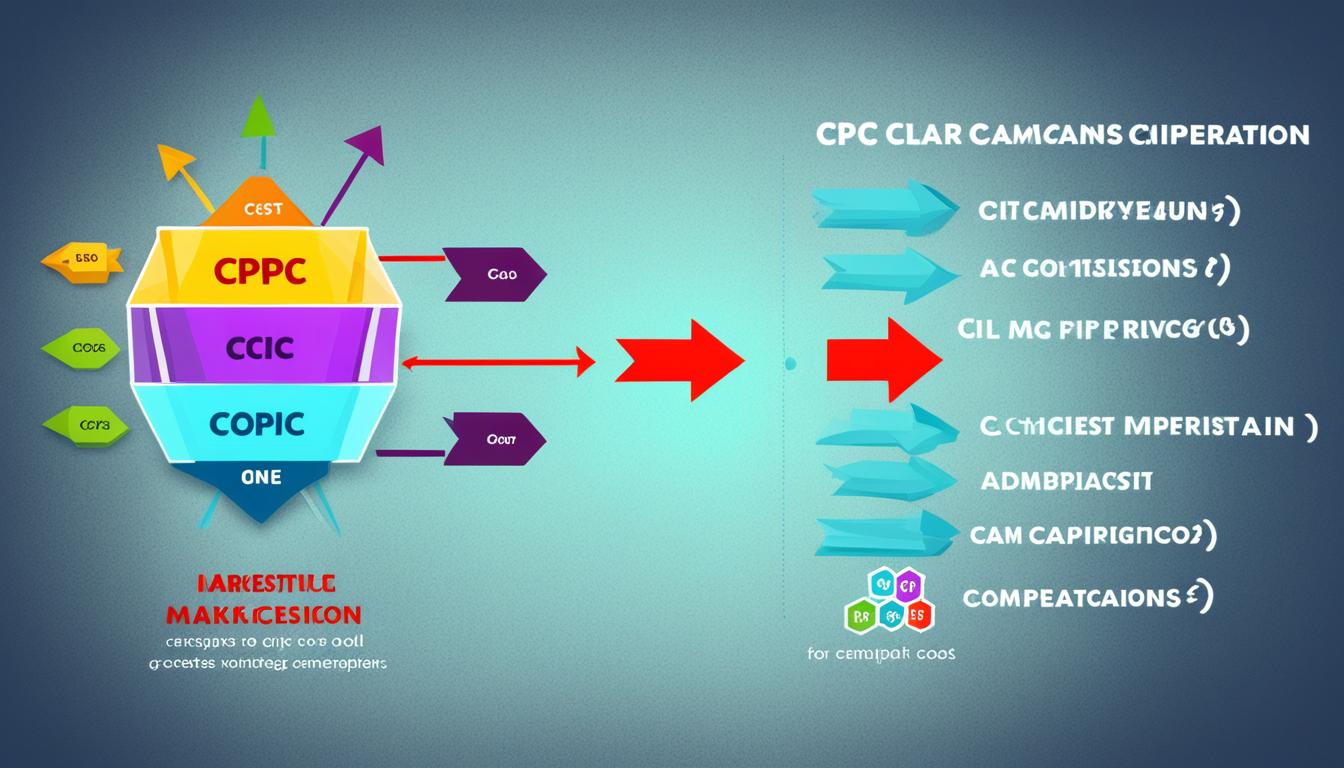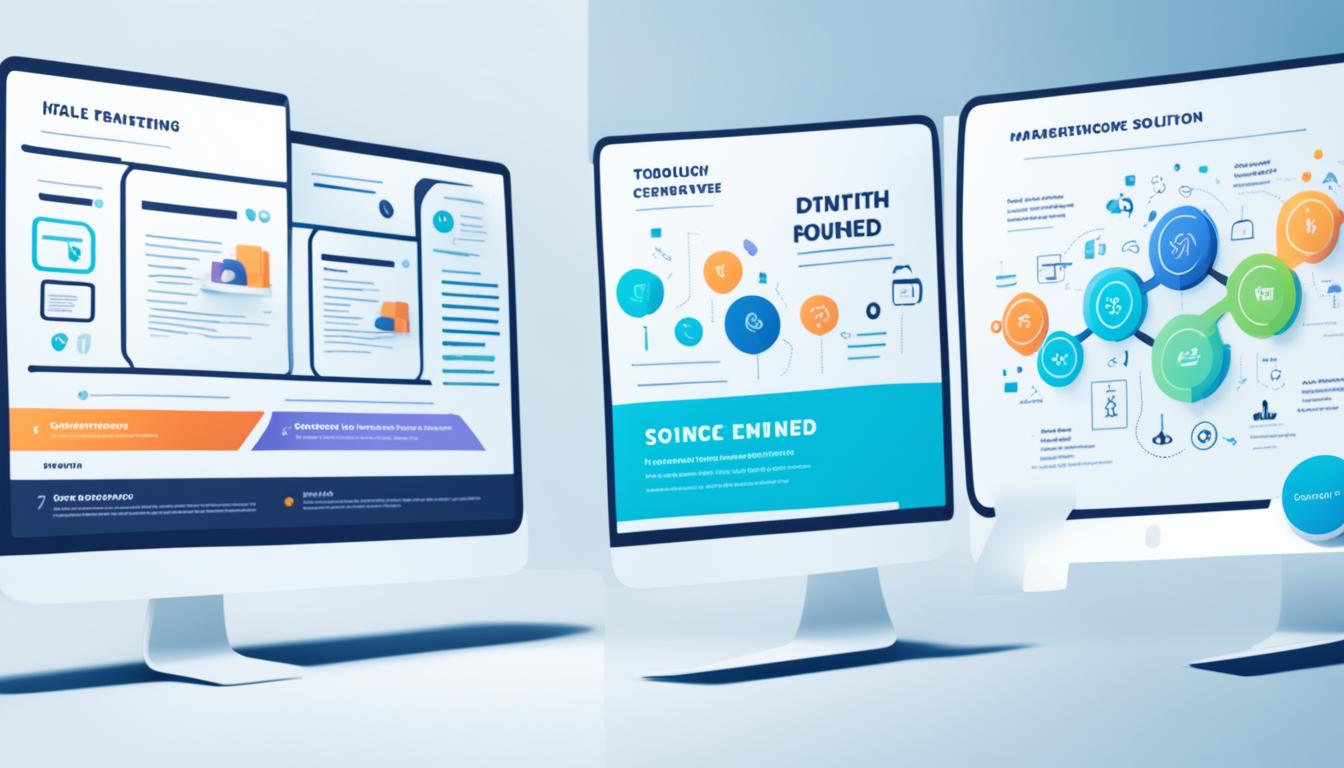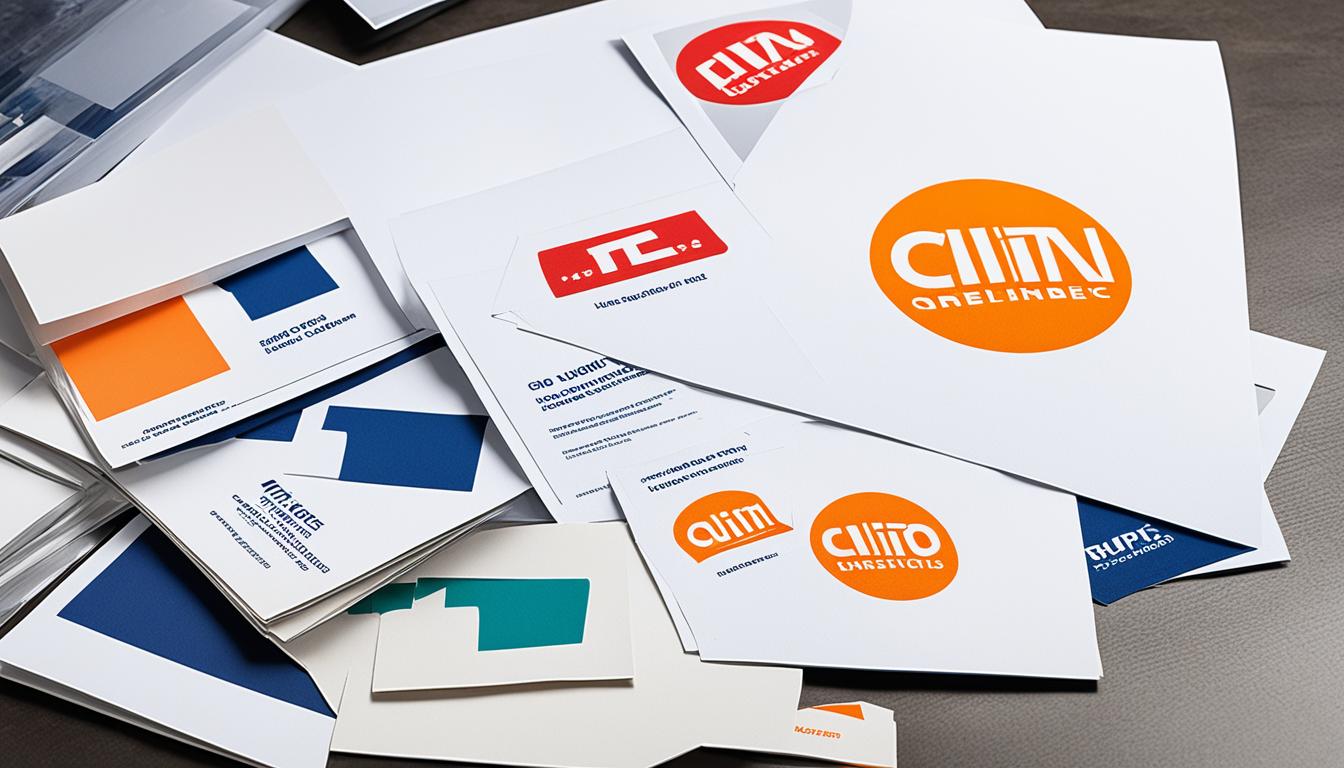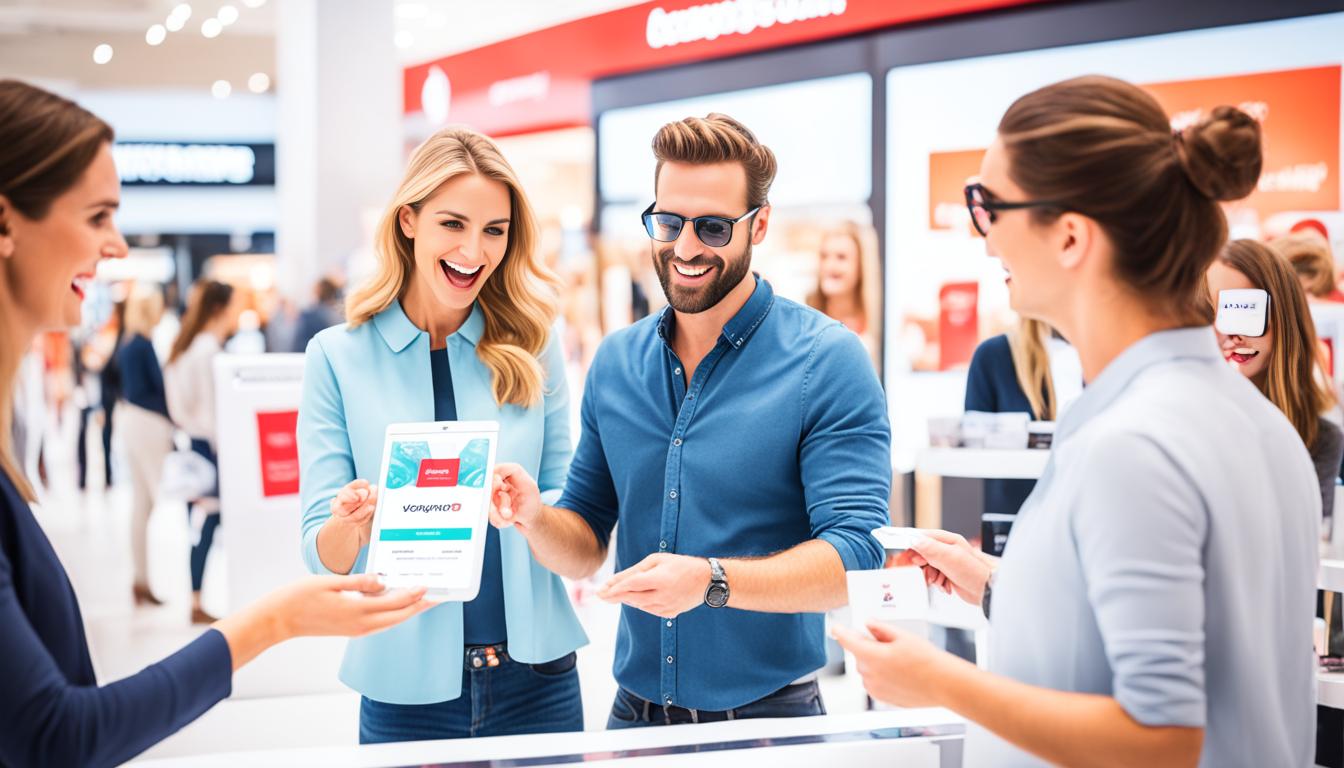Lufthansa, one of the leading airlines in the world, has embraced a forward-thinking marketing strategy for 2024. With a strong focus on digital innovation, the airline aims to enhance the customer experience and carve a competitive edge in the industry.
Through meticulous competitive analysis and detailed market segmentation, Lufthansa is poised to develop impactful branding strategies and compelling advertising campaigns. By understanding the evolving landscape of airline marketing and leveraging the power of digital marketing, Lufthansa aims to captivate its target audience and strengthen its position in the market.
In this case study, we will delve into the various elements of Lufthansa’s marketing strategy for 2024, exploring their approach to customer experience, competitive analysis, branding strategies, and market segmentation. Join us as we uncover the innovative tactics employed by Lufthansa to stay ahead in the ever-evolving world of aviation.
Key Takeaways:
- Lufthansa’s marketing strategy for 2024 focuses on digital innovation and enhancing the customer experience
- Competitive analysis and market segmentation play a crucial role in shaping Lufthansa’s branding strategies
- Effective advertising campaigns are a cornerstone of Lufthansa’s marketing approach
- The airline recognizes the importance of staying consistent with its brand representation across different channels
- Lufthansa’s branding history dates back to 1962, with Otl Aicher and the “Ulmer studie” playing a significant role
The Importance of Brand Consistency
In today’s competitive business landscape, brand consistency plays a crucial role in shaping brand perception and establishing a strong brand identity. Inconsistency in brand representation across different channels can confuse customers, erode brand trust, and hinder brand recognition. Small companies with new brands often struggle to establish a consistent culture, while medium-sized and large companies face challenges in maintaining and distributing style guides.
Style guides are essential tools that outline brand guidelines, including visual elements, tone of voice, and messaging. They serve as a blueprint for brand implementation and ensure consistency in brand identity across various touchpoints, such as websites, social media platforms, advertising campaigns, and packaging.
Lufthansa, a leading airline, recognized the importance of brand consistency and the need for a structured approach to brand implementation. To address these challenges, Lufthansa took a proactive step by creating a living style guide that would serve as a central resource for all stakeholders involved in brand representation. This living style guide is regularly updated to reflect the evolving brand guidelines and strategies.
By developing a comprehensive style guide, Lufthansa aims to ensure consistent branding across all communication channels, reinforcing its brand perception and creating a cohesive brand experience for its customers around the world.
| Benefits | Description |
|---|---|
| Enhanced Brand Recognition | A consistent brand identity leads to easier recognition and recall among customers. |
| Established Brand Trust | Consistency builds trust as customers perceive a consistent brand as reliable and dependable. |
| Improved Customer Loyalty | Consistent brand experiences create a sense of familiarity and emotional connection, fostering customer loyalty. |
| Clarity and Differentiation | Consistent branding helps customers differentiate a brand from its competitors and understand its unique value proposition. |
| Increased Brand Equity | Brand consistency contributes to the long-term value and equity of a brand, making it more valuable in the marketplace. |
Lufthansa’s Brand Story
Lufthansa, one of the world’s leading airlines, has a rich history that traces back to 1962 with the renowned “Ulmer studie.” This brand history has been shaped by influential figures such as Otl Aicher and his students. Otl Aicher, the renowned German graphic designer, played a significant role in shaping Lufthansa’s visual appearance.
The “Ulmer studie” is known for its iconic pictorials that beautifully depict the human dream of flying. From its early days, Lufthansa has understood the power of visual storytelling and has utilized it to create a brand identity that resonates with its audience.
The Influence of Otl Aicher
Otl Aicher, through his work with Lufthansa, pioneered the concept of corporate design and helped establish Lufthansa as a distinct and recognized brand. His design principles focused on simplicity, clarity, and functionality, which are deeply ingrained in Lufthansa’s visual identity.
By incorporating Otl Aicher’s design philosophy, Lufthansa has been able to consistently communicate its brand values and create a memorable and visually cohesive brand experience for its customers.
The Legacy of the “Ulmer studie”
The “Ulmer studie” remains an integral part of Lufthansa’s brand heritage, representing the airline’s commitment to excellence and innovation. It symbolizes Lufthansa’s dedication to making flying a dream come true for passengers worldwide.
Through its brand history and the contributions of Otl Aicher and his students, Lufthansa continues to inspire and engage its audience, creating lasting connections and a strong brand presence in the aviation industry.
Evolution of Brand Implementation
Brand implementation is an essential aspect of maintaining brand consistency across various communication channels. It involves the development and application of guidelines, assets, templates, and collaboration to ensure a unified brand experience. However, with the advent of the internet and the digital age, brand implementation had to adapt and evolve to keep up with new communication channels.
In the past, brand implementation mainly focused on traditional mediums such as print advertisements and television commercials. However, with the rise of social media, websites, and mobile applications, brands now have a plethora of digital channels to engage with their audience.
Uncertainty in using the brand in these new channels can lead to inconsistency and confusion among consumers. To overcome this challenge, brands need to establish clear brand implementation strategies that encompass both traditional and digital touchpoints.
One example of the evolution of brand implementation is the development of responsive design templates. With the increasing use of mobile devices, brands had to adapt their visual assets to fit different screen sizes and resolutions. This required creating templates that could seamlessly adjust and maintain brand consistency across various devices.
Collaboration also plays a crucial role in ensuring brand consistency across different communication channels. With multiple departments and stakeholders involved in creating and distributing brand assets, effective collaboration platforms and processes are necessary to streamline communication and maintain consistency.
Moreover, brands must constantly evaluate and optimize their brand implementation strategies to keep up with evolving trends and technologies. Regularly updating style guides, revisiting communication channels, and leveraging customer feedback are essential steps in achieving and sustaining brand consistency.
Brand Implementation Challenges
The evolution of brand implementation has brought about its fair share of challenges. One of the main challenges is ensuring consistency across multiple communication channels while adapting to their unique requirements.
For instance, a brand’s visual assets may need to be modified for different social media platforms to optimize user experience. This poses a challenge in maintaining brand consistency while considering platform-specific guidelines and user behavior.
Another challenge is the proliferation of user-generated content. Brands need to find ways to incorporate this content into their brand implementation while ensuring it aligns with their brand guidelines and messaging.
| Challenges | Solutions |
|---|---|
| Inconsistent use of branding across different communication channels | Develop comprehensive brand guidelines and living style guides to ensure consistent brand representation. |
| Adapting visual assets for different communication channels | Create responsive design templates that can adapt to various screen sizes and resolutions. |
| Incorporating user-generated content while maintaining brand consistency | Implement clear guidelines for user-generated content, ensuring it aligns with the brand’s tone and messaging. |
By addressing these challenges head-on and continuously improving brand implementation strategies, brands can achieve the desired consistency and effectively communicate their brand message across various communication channels.
Lufthansa’s Digital Brand Transformation
Lufthansa faced significant challenges in maintaining brand consistency, particularly in its digital channels. One of the main issues was the lack of specific UI guidelines, which led to inconsistencies between the app and web teams. Without clear guidelines, it became difficult to ensure a cohesive brand experience across all digital touchpoints.
Another challenge was the distribution and versioning of brand-related guidelines. With multiple teams and stakeholders involved, it was challenging to keep everyone on the same page and ensure that the most up-to-date guidelines were being followed. This resulted in inconsistencies and discrepancies in brand representation, impacting the overall brand perception.
The Need for Digital Brand Transformation
To address these challenges and achieve brand consistency across digital platforms, Lufthansa embarked on a digital brand transformation journey. The goal was to establish a unified and cohesive brand presence in the digital space, aligning the app and web teams and ensuring consistent brand guidelines.
As part of this transformation, Lufthansa developed comprehensive UI guidelines that provided clear direction on how the brand should be represented in digital channels. These guidelines covered various aspects, including color palettes, typography, iconography, and layout principles. By providing specific and detailed instructions, Lufthansa aimed to overcome the inconsistencies that had previously plagued its digital brand presence.
Implementing the Digital Brand Transformation
To ensure successful implementation, Lufthansa created a centralized repository for brand-related guidelines. This allowed all teams and stakeholders to access the most up-to-date version of the guidelines and facilitated easy collaboration and communication. Through this centralized approach, Lufthansa was able to streamline the distribution and versioning of brand-related guidelines, ensuring that everyone had access to the correct information.
In addition to the guidelines, Lufthansa also invested in training programs to educate the app and web teams on the importance of brand consistency and the specific requirements outlined in the UI guidelines. This helped build a shared understanding and commitment to upholding the brand’s digital identity.
The Benefits of Digital Brand Transformation
The digital brand transformation initiated by Lufthansa brought several benefits to the company. By establishing clear UI guidelines, the airline achieved greater brand consistency, ensuring that the digital experience aligned with the overall brand identity. This consistent brand representation improved brand perception and helped strengthen brand recognition among customers.
The centralized repository for brand-related guidelines also improved efficiency and collaboration among teams. With easy access to the guidelines, teams were able to work more seamlessly, reducing the chances of misinterpretation or outdated information. This streamlined approach to brand management saved valuable time and resources, allowing teams to focus on delivering an exceptional digital experience.
Overall, Lufthansa’s digital brand transformation was a crucial step in enhancing brand consistency and creating a unified digital presence. By addressing the challenges associated with brand implementation in the digital space, the airline was able to strengthen its brand identity and provide customers with a consistent and seamless experience across all digital touchpoints.
Partnering with United Airlines
Lufthansa established a highly successful partnership with United Airlines for its pilot training program, opening up lucrative career opportunities for certified flight instructors through a fast track to success. This partnership provided a unique pathway for instructors to catapult their careers with United Airlines, a renowned name in the aviation industry.
However, despite its initial success, the partnership eventually came to an end, prompting Lufthansa to reevaluate its marketing strategy and explore new avenues for growth. The collaboration with United Airlines showcased the effectiveness of Lufthansa’s pilot training program, generating interest and attracting aspiring aviation professionals from all over.
Image:
To continue offering outstanding career opportunities and building a strong pool of talented flight instructors, Lufthansa recognized the need to forge new partnerships and revamp its integrated marketing approach. By leveraging its expertise in pilot training and its reputation for excellence, Lufthansa aimed to attract a diverse group of individuals passionate about a flying career.
While the partnership with United Airlines was remarkable, Lufthansa remains committed to exploring new opportunities and partnerships to further enhance its pilot training program and provide aspiring aviation professionals with the best possible career prospects.
Shifting Strategy and Differentiators
With the United Airlines partnership no longer in play, Lufthansa had to reevaluate its approach and highlight other key differentiators to stand out in the competitive aviation industry. The airline recognized the importance of an integrated marketing strategy that would emphasize its unique offerings to flight instructors.
One of the major differentiators that Lufthansa emphasized was stable employment. Instructors could rely on Lufthansa for a long-term career with opportunities for growth and advancement. With a higher salary package, Lufthansa aimed to attract experienced flight instructors who seek financial stability and professional development.
Flexibility was another significant factor in Lufthansa’s shift in strategy. Understanding that many instructors value work-life balance, the airline offered flexible work hours to accommodate personal commitments while ensuring a productive training environment.
In addition to these benefits, Lufthansa also showcased its investment in a new fleet of modern planes, providing instructors with the opportunity to work with state-of-the-art aircraft. The location of training in Arizona was another appealing aspect, offering a pleasant climate and multiple training facilities.
By highlighting these differentiators, Lufthansa aimed to attract top talent in the aviation industry, showcasing itself as a desirable employer that values stability, financial rewards, work-life balance, and cutting-edge training facilities.
Media Strategy and Target Audience
Lufthansa recognizes the need for a tailored media strategy to effectively reach its target audience, which comprises aviation students and certified flight instructors. To maximize visibility and engagement, the airline employs various digital advertising channels, such as paid search and paid social. These platforms allow Lufthansa to specifically target individuals within the aviation industry who are seeking educational opportunities or career advancement.
In addition to digital advertising, Lufthansa capitalizes on out-of-home billboards strategically placed near airports. This ensures that the brand message reaches its niche audience during key moments when they are most likely to be receptive to educational and career opportunities in the aviation industry.
To further augment its media strategy, Lufthansa utilizes a targeted email list acquired from the Federal Aviation Administration (FAA). By leveraging this database of aviation professionals, Lufthansa is able to directly communicate with potential candidates who have indicated an interest in aviation training and career development.
By combining these various media channels, Lufthansa ensures maximum exposure to its target audience and increases the likelihood of attracting aspiring aviation students and certified flight instructors.
| Media Strategy | Target Audience |
|---|---|
| Digital advertising | Aviation students |
| Certified flight instructors | |
| Out-of-home billboards | Aviation students |
| Certified flight instructors | |
| Targeted email marketing | Aviation students |
| Certified flight instructors |
Results and Continued Success
Lufthansa’s marketing campaign yielded impressive results, with a significant increase in applications and a low cost per lead. The campaign successfully hired instructors in a timely manner for the start of the training class. This success further fueled the lead generation efforts and propelled ongoing brand identity development for Lufthansa Aviation Training.
| Metric | Results |
|---|---|
| Increased Applications | Achieved a notable increase in the number of applications received, reflecting the effectiveness of the marketing campaign. |
| Cost per Lead | The campaign maintained a low cost per lead, demonstrating cost-efficiency in attracting potential instructors. |
| Instructor Hiring | Successfully recruited qualified instructors, ensuring a qualified and skilled team for the training program. |
| Lead Generation | The campaign generated a high volume of leads, contributing to the continued growth of Lufthansa’s instructor pool. |
The Future of Lufthansa’s Marketing Strategy
As Lufthansa progresses into the future, it recognizes the importance of staying ahead in a rapidly evolving digital landscape. The airline’s marketing strategy will continue to prioritize digital innovation and enhancing the customer experience to remain competitive in the industry.
In an era where technology plays a crucial role in shaping consumer behavior, Lufthansa aims to leverage digital advancements to connect with customers on a deeper level. By utilizing data-driven insights, the airline will develop personalized marketing campaigns that resonate with its target audience, ensuring a seamless customer journey and enhancing customer satisfaction.
Lufthansa understands that effective communication is key to success in the digital age. The airline is committed to adapting to evolving communication channels to engage customers across various touchpoints. Whether it’s through social media platforms, mobile applications, or personalized emails, Lufthansa aims to deliver consistent messaging that reinforces its brand identity and values.
Furthermore, Lufthansa recognizes the significance of a consistent brand implementation throughout all customer interactions. By maintaining a unified brand experience, the airline aims to build trust, loyalty, and a strong emotional connection with its customers.
Tools and Resources for Brand Consistency
To achieve brand consistency, companies can utilize various tools and resources. These include brand consistency tools, style guide management platforms, and UI component libraries. By effectively implementing these resources, companies can ensure a cohesive and unified brand presence across all channels and touchpoints.
Living Style Guides
A living style guide serves as a comprehensive resource that outlines brand guidelines, including logo usage, color palettes, typography, and tone of voice. It acts as a central reference point for designers, developers, and content creators, enabling them to maintain consistent brand messaging and visual elements. By providing a clear and accessible style guide, companies can foster brand consistency and ensure all teams are aligned with the brand’s visual identity.
UI Component Libraries
UI component libraries are pre-built sets of design elements, such as buttons, forms, and navigation menus, that follow consistent design patterns and styles. These libraries facilitate the creation of consistent user interfaces by enabling designers and developers to reuse and standardize UI components across different projects and platforms. By incorporating UI component libraries into their workflow, companies can streamline design and development processes, saving time and effort while maintaining visual consistency.
Design-to-Development Collaborations
Effective collaborations between designers and developers are essential for achieving brand consistency. By establishing clear communication channels and workflows, designers and developers can work together to ensure the accurate implementation of design elements in the final product. Regular design reviews, code reviews, and feedback sessions can help bridge the gap between design intent and development execution, resulting in consistent brand representation across all digital touchpoints.
Platforms like Frontify provide comprehensive brand management solutions that encompass living style guides, asset libraries, and collaboration tools. These platforms allow companies to centralize their brand assets, manage their style guides effectively, and facilitate collaboration between design and development teams. By leveraging these brand consistency tools and resources, companies can strengthen their brand identity and build trust with their target audience.
With the help of brand consistency tools, style guide management platforms, and UI component libraries, companies can establish a strong and unified brand identity that resonates with their audience. These resources empower teams to maintain consistency in visual elements, messaging, and user experience, ultimately enhancing brand perception and loyalty.
Conclusion
In conclusion, Lufthansa’s Marketing Strategy for 2024 is centered around digital innovation, enhancing the customer experience, and achieving brand consistency. By leveraging partnerships, implementing targeted marketing campaigns, and emphasizing their unique differentiators, Lufthansa aims to maintain a competitive edge in the ever-evolving airline industry while attracting top talent to their training programs.
Looking ahead, Lufthansa recognizes the importance of adapting their marketing strategy to align with advancements in digital technology and meet the ever-changing expectations of customers. This includes leveraging new communication channels, embracing emerging trends, and continuously enhancing their brand implementation to ensure consistency across all touchpoints.
As Lufthansa continues to evolve its marketing strategy, the focus remains on delivering exceptional customer experiences, leveraging digital innovations, and solidifying its position as a leader in the airline industry. By staying at the forefront of industry trends and leveraging their unique competitive advantages, Lufthansa is well-positioned for success in the years to come.






